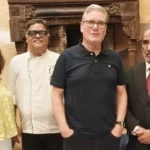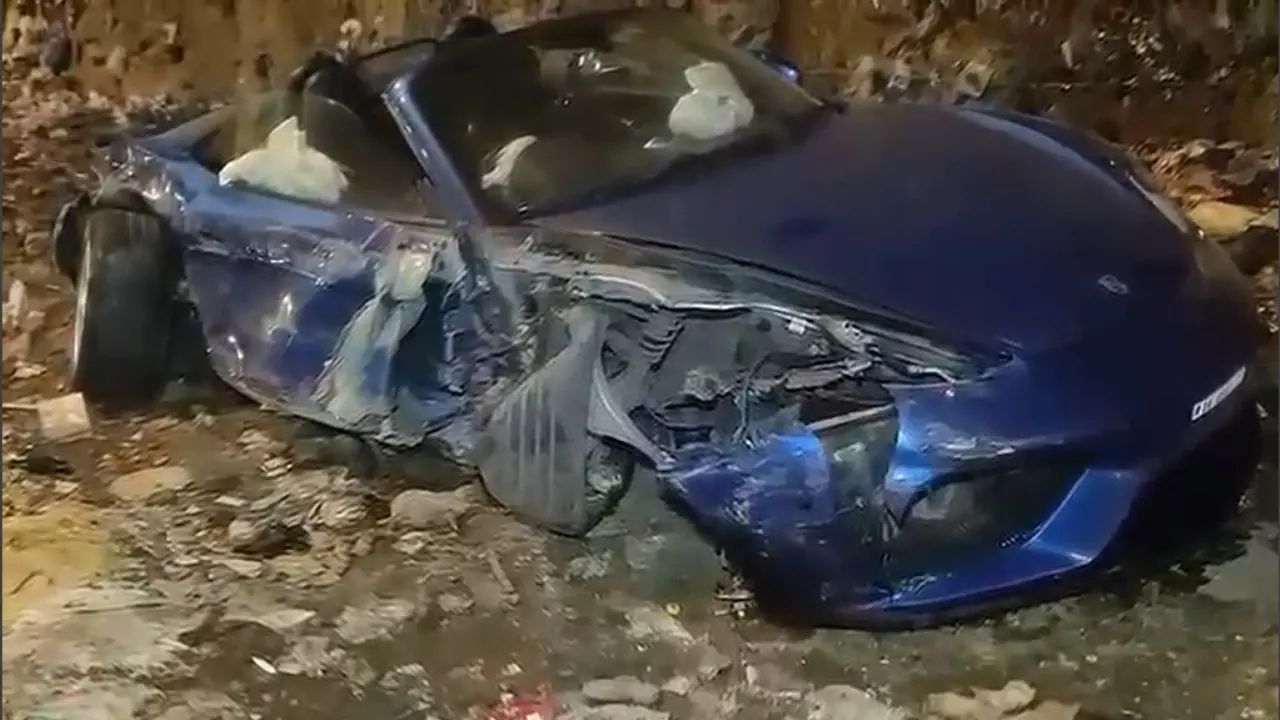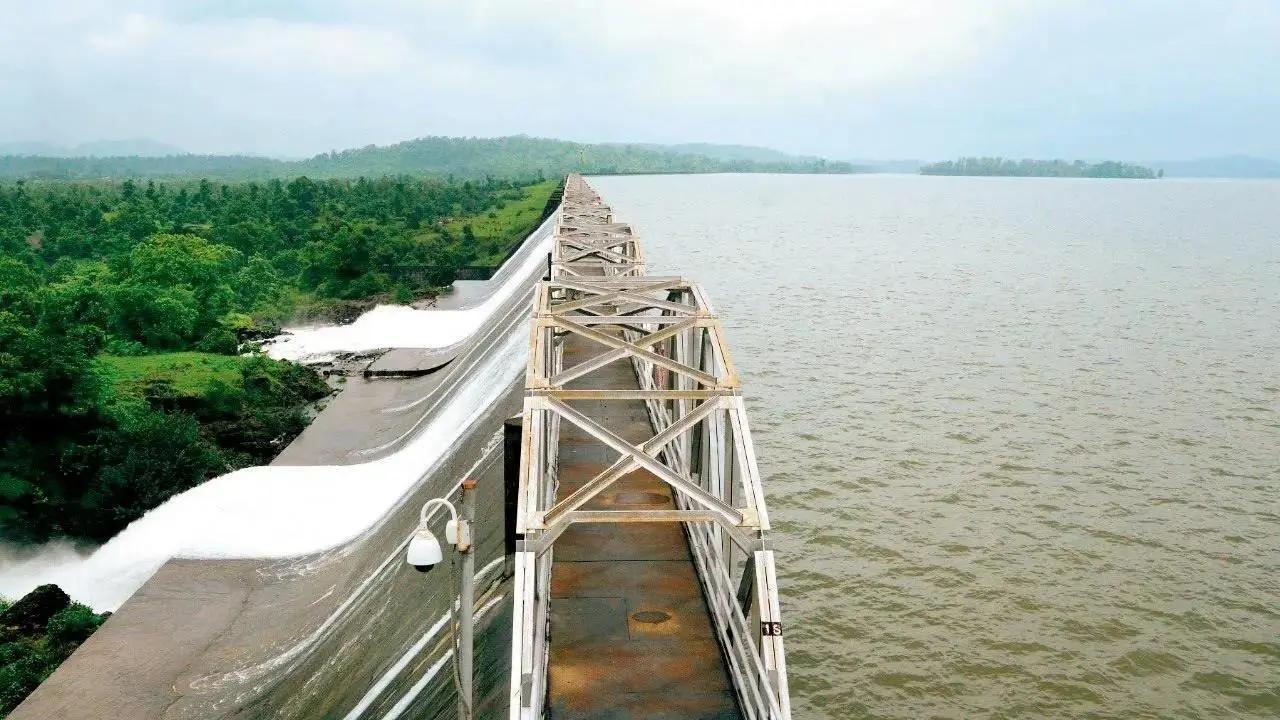With best wishes
A BEST bus conductor bids farewell to the Mumbaicha Vakratunda idol during a visarjan procession in Dadar West
Stuart has no ‘media man’ qualms
Stuart Broad, the unreluctant media man. Pic/Getty Images
It was refreshing to listen to former England fast bowler (and more than just a capable batsman) Stuart Broad the other day after England lost the second of the three-match ODI series against South Africa at Lord’s under lights. Broad, 39, now a television pundit, who was seen and heard during the England vs India Test series, was speaking on Sky Sports about how the hosts were so open about their Bazball-heavy plans in the recent Anderson-Tendulkar Trophy series. But he didn’t quite see that continue during the two ODIs. “With the Test match side, Brendon [head coach McCullum] was so clear with what he wanted to do. Even the press, even we knew what the goal was, so that we could back it,” he said, stopping short of saying that England didn’t spell out their immediate white-ball cricket goals. Broad’s utterances indicate that he has no qualms in now being part of the media group. If only all commentators feel as comfortable to be known as press or media men. They shouldn’t have such qualms to be categorised that way. For, they commentate and write columns. So, welcome to the gang fellas.
That’s the Warli way
The Warli art tribute created by Bhoir on geru soil. Pics courtesy/Akash Bhoir
When Aarey resident Akash Bhoir is not leading Adivasi rights movements in the city, or conducting experiential tours inside the Aarey Forest, he treats fellow Mumbaikars like us to awe-inspiring Warli art. Bhoir’s latest work, a tribute to rivers, is a 2 ft x 2.5 ft mural painted on a traditional geru maati (red ochre soil) canvas.
Akash Bhoir with a traditional tarpa
“Motifs and elements from the forests have always been at the heart of Warli art. This time, I wanted to depict the journey of a river, beginning from the mountains, and flowing gently into a village where she nurtures life for its inhabitants. At the centre, you’ll see a railroad track that runs parallel to the river, almost racing it to the end. This reflects both growth and dependency,” the Kelti Pada resident revealed to us. While Warli tradition calls for a mixture of ground rice, water and gum to formulate the white pigment, Bhoir uses acrylic paints in his version of the age-old tribal practice. “A piece like this takes nearly seven to eight days to finish. It’s quite a challenge, and requires close attention to detail at every step,” he told this diarist. Now that’s the kind of dedication your fancy AI art tools can only dream of. Those keen to give the artwork a new home can log on to @the.akashbhoir to send purchase queries.
Pastel perfect
Folk Legacy by Parag Borse. PICS COURTESY/PARAG BORSE
After the Kolhapuri chappal obsession, it is the traditional Maharashtrian pheta that seems to be winning hearts in the West. Navi Mumbai-based Parag Borse’s pastel artwork Folk Legacy, featuring a shepherd from rural Maharashtra sporting a bright orange turban has bagged the Yang Family Award at the 53rd Pastel Society of America Annual Exhibition.
With the awards presentation scheduled on September 19 in Manhattan, Borse shared, “Through my portraits, I strive to preserve the stories and faces of India’s rural life. It is an honour to represent our culture globally.”
Cowboy canvas
A section of the new graffiti artwork. Pic courtesy/Siddhesh Sapte
Graffiti artist Siddhesh Sapte aka NME’s rendition of Shinichiro Watanabe’s iconic anime series, Cowboy Bebop caught this diarist’s attention during our commute in Vashi’s Sector 4. NME told this diarist, “I’ve always loved [Cowboy Bebop’s] retro style; it was also the theme for an international online event: World Wall Stylers 2025. It took me about four days to finish. I could’ve wrapped it up in a day, but Mumbai’s erratic rains made it an ordeal. A heavy spell of rain ruined the work in just four minutes. I had to redo and clean everything. Nevertheless, it was fun.”
In search of new hope
A health camp organised by HOPE. PIC COURTESY/WILSON COLLEGE
In an effort to inculcate social responsibility and contribute to community welfare, Wilson College, Mumbai, is banking on HOPE (Help Our People Elevate), an annual Institutional Social Responsibility event. Since 2008, the college has adopted the village of Vehalonde in Asangaon, Thane, conducting several cause-based activities over the years. “The theme for HOPE 2025 is Engines of Empowerment, where we will focus on empowering the women of the village during our upcoming visit on September 13. We have raised funds to provide a granule food packaging machine that will enable them to pack and sell their harvest in the market this year,” Nilofer Sarang, convenor, HOPE, shared. Continuing their tradition, the college, along with students from other schools and colleges, will form a themed human mosaic at the Girgaon Chowpatty beach on September 15.











